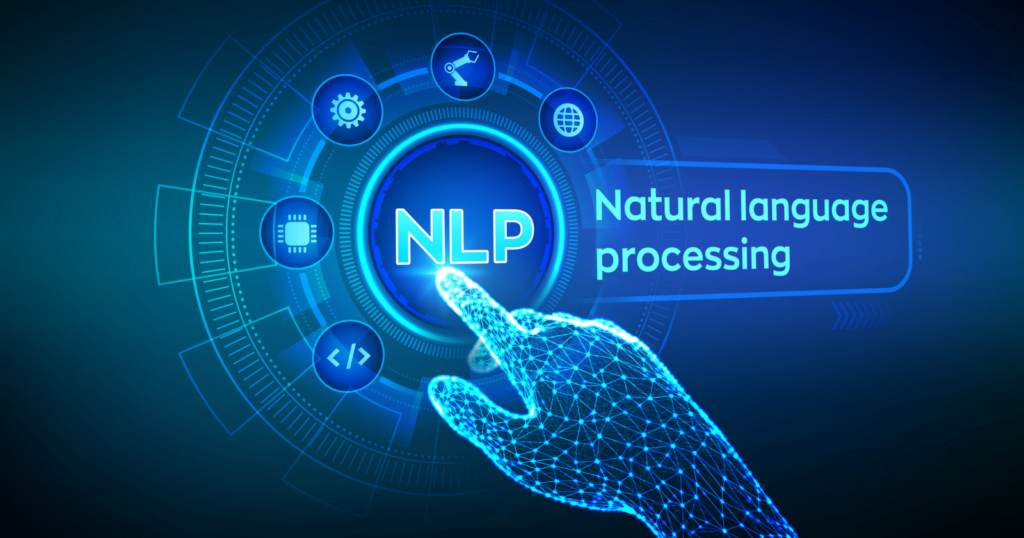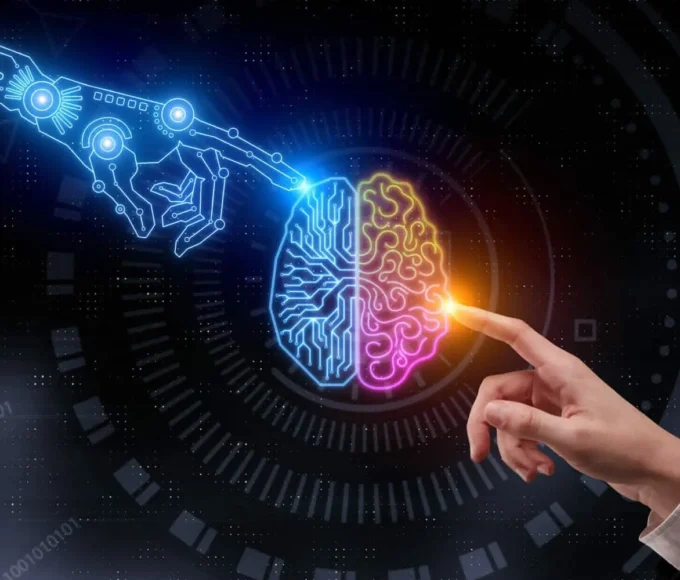In the exciting world of artificial intelligence (AI), Natural Language Processing (NLP) stands as a vital field that empowers machines to truly understand and engage with human language. It has revolutionized the development of AI-driven conversational interfaces, making interactions with technology more intuitive and human-like. In this blog, we’ll dive into the fascinating power of NLP and its pivotal role in shaping conversational interfaces that enhance user experiences across a wide range of domains.
Understanding Natural Language Processing
Natural Language Processing is like a bridge connecting human communication and machine understanding. It combines insights from linguistics, computer science, and AI to create algorithms and techniques that enable computers to process, interpret, and respond to human language in a meaningful and contextually relevant manner.
The Components of Natural Language Processing
NLP involves several important components that work together to make sense of human language:
Text Pre-processing: Just like we humans need to tidy up before starting a conversation, NLP algorithms clean and normalize text data. They perform tasks such as breaking text into smaller units (tokenization), simplifying words to their root form (stemming), and removing unnecessary words (stopwords).
Morphological Analysis: Words can wear different hats, and NLP understands this by analyzing their forms and structures. It looks at inflections and root words to grasp their meaning within a given context.
Syntactic Analysis: Understanding grammar is essential for effective communication. NLP performs syntactic analysis, or parsing, to comprehend the relationships and structure between words in a sentence. It identifies the roles of words, such as nouns, verbs, and adjectives, and determines how they depend on each other.
Semantic Analysis: NLP goes beyond the surface to uncover the deeper meaning behind words. Through semantic analysis, it tackles tasks like identifying named entities (names of people, places, etc.), disambiguating word meanings, and labeling the semantic roles words play in a sentence.
Sentiment Analysis: Just as we can sense the emotions behind someone’s words, NLP can analyze sentiment. It determines whether a given text expresses a positive, negative, or neutral sentiment. Sentiment analysis is crucial for understanding user emotions and tailoring appropriate responses.
Language Generation: NLP also knows how to speak the language. Language generation techniques help in crafting human-like responses based on the understanding of input queries. They incorporate methods such as summarization, paraphrasing, and dialogue management to generate coherent and contextually relevant replies.
Powering Conversational Interfaces
Conversational interfaces, such as chatbots and virtual assistants, have become incredibly popular across various domains, transforming the way we interact with technology. NLP plays a vital role in empowering these interfaces with human-like conversational abilities. Let’s explore how NLP powers conversational interfaces:
Intent Recognition: NLP enables conversational interfaces to accurately understand user intent. By analyzing user queries, NLP models can classify and extract the user’s intention, allowing the system to provide appropriate responses or direct the query to the relevant module.
Contextual Understanding: NLP models utilize techniques such as named entity recognition and coreference resolution to maintain a contextual understanding throughout a conversation. This empowers conversational interfaces to remember past interactions and respond intelligently based on the current context, just like we humans do.
Multi-turn Dialogue Management: Engaging in extended conversations requires the ability to manage multiple turns smoothly. NLP plays a crucial role in dialogue management, allowing conversational interfaces to maintain context, handle complex queries, and provide more comprehensive and satisfactory responses.
Sentiment Analysis and Emotion Detection: Conversational interfaces enriched with sentiment analysis can perceive user sentiment and tailor responses accordingly. The addition of emotion detection capabilities enhances the interaction even further, enabling the system to respond empathetically to user emotions, leading to a more engaging and personalized user experience.
Language Generation and Personalization: By leveraging NLP techniques for language generation, conversational interfaces can deliver responses that feel human-like. They take into account user preferences, historical interactions, and contextual cues to provide personalized recommendations, suggestions, and information, just as a helpful human assistant would.
The Future of NLP-driven Conversational Interfaces
The field of NLP and conversational interfaces is advancing at a remarkable pace, driven by breakthroughs in deep learning, neural networks, and large-scale language models. The integration of these technologies with NLP has brought us state-of-the-art conversational AI systems like OpenAI’s GPT-3 and GPT-4. These models showcase impressive language understanding and generation capabilities, pushing the boundaries of human-like interactions.
In the future, we can expect conversational interfaces to become even more sophisticated, accurately comprehending complex queries, emotions, and context. As NLP continues to progress, we may witness conversational interfaces with advanced reasoning abilities, adept at handling nuanced conversations and exhibiting enhanced empathy. The future holds exciting possibilities for NLP-driven conversational interfaces, transforming the way we interact with AI-powered systems.
Natural Language Processing has unlocked the potential for AI-driven conversational interfaces to engage with users more naturally and intuitively. By enabling machines to understand, interpret, and generate human language, NLP techniques have transformed chatbots, virtual assistants, and other conversational interfaces into valuable companions across various domains.
As NLP advances further, we can eagerly anticipate conversational interfaces that offer increasingly human-like interactions, elevating user experiences to new heights.
















%s Comment